Behind bars and waiting for science: the power of genetic testing for the Addis Fifteen.

Male and female Addis lions in the Addis Ababa Lion Zoo. Photo courtesy of: Klaus Eulenberger.
They languished behind bars in squalid conditions, their very survival in jeopardy. Outside, an international team of advocates strove to bring worldwide attention to their plight. With modern genetics, the experts sought to prove what they had long believed: that these individuals were special. Like other cases of individuals waiting for rescue from a life of deprivation behind bars, the fate of those held captive might be dramatically altered with the application of genetic science to answer questions of debated identity. Now recent DNA analysis has made it official: this group is special and because of their scientifically confirmed distinctiveness they will soon enjoy greater freedom.
Many long suspected that the fifteen languishing lions kept within the archaic Addis Ababa Lion Zoo in Ethiopia were not your average lions. The lions are descended from the private lion collection of the last Ethiopian ruler, Emperor Haile Selassie (crowned in 1930), who captured their ancestors from the wild and brought them to his palaces in the 1940s. These modern day survivors persist in the same antiquated holding pens as their descendants, lacking proper nutrition or socialization. All lions (Panther leo) are endangered and rare, but these lions seemed special; as scientists would say, they exhibited certain observable and distinguishing (i.e. phenotypic) differences from other, more common subspecies of lion. Visiting biologists took note of several remarkable features of appearance which hinted that the group was distinctive.
“The male lions at Addis Ababa Zoo are characterized by a large, dark brown mane extending down the chest through the front legs, down the back below the shoulders and the length of the belly through the groin…Compared to male lions from eastern and southern Africa [they] are also characterized by lower body mass…and smaller body size,” wrote the authors of a new study in the European Journal of Wildlife Research.
 Male Addis lion. Photo courtesy of: Klaus Eulenberger. |
Could these be the relatives of an extinct lion subspecies? It had been suggested that the Addis Ababa lions might be the last true relatives of North African Barbary lions or South African Cape lions, both extinct. Or even more special, might they be an entirely genetically distinctive population of lion? If so, proving the lions’ genetic identities was urgent due to breeding biological time constraints and poor zoo conditions.
“The conditions at the Addis zoo are dreadful,” biologist Claudio Sillero of the University of Oxford’s Wildlife Conservation Research Unit told Africa Geographic, describing it as an old Victorian menagerie, with paint peeling from thinning walls and no soft ground.
“The lions are housed in a 4 x 5 x 2.5-metre den with eight rooms that can accommodate eight pairs of adult lions. The capacity of the cubs’ lair is two. There is no maternity cage. The male and female lions are kept in isolation. They are fed about 10 kilograms each day of non-deboned beef and given water. No other food or supplements are provided,” local veterinarian, Melaku Tefera of Haramaya University, Ethiopia wrote in a 2003 Biodiversity and Conservation article.
Addis Lion zookeepers and city administrators were so overwhelmed from caring for the animals that they reached out to their German ‘sister city’, Leipzig, for help in 2006.
“The mayor of Addis asked the mayor of Leipzig for help as Addis Lion Zoo was under pressure because of the poor keeping conditions. Vets of Leipzig zoo went to Addis and checked the health status of most of the lions in Addis zoo,” Frank Oberwemmer, of the Leipzig Zoo, told mongabay.com.
Granted access to the lions, the team of vets took the opportunity to research the lion identities and so, Oberwemmer adds, “blood samples were taken for genetic investigations as groundwork for an international breeding program in the case of confirmation of an own subspecies or at least an own genetic construction.”
An international effort was mobilized: Susann Bruche of the Imperial College London, Markus Gusset of the University of Oxford, and Carlos Driscoll Chair of Conservation Genetics at the Wildlife Institute of India, and experts from the Max Planck Institute for Evolutionary Anthropology (which funded the study) and UK’s Durham University, compared Addis zoo lion DNA samples with samples from other African and Asian lions.
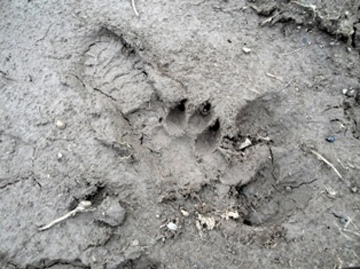 Footprint of a young lioness at the campground in the Harenna forest. Photo courtesy of: Klaus Eulenberger. |
“Without genetic studies,” the scientists wrote in their paper published in the European Journal of Wildlife Research (October 2012), “cryptic species such as the Addis lions could remain unknown or go extinct without ever being recognized.”
While the lions spent day after day in the dilapidated zoo, the team was hard at work. Like much of today’s scientific work, proving the identities of the lions would be an intensely collaborative effort, drawing on the specialization of many academic disciplines.
“A study as the one published by us requires input from different sides. There is the administration part to allow sample taking and transport which was coordinated by the Zoo Leipzig (Dr Jörg Junhold, Prof. Klaus Eulenberger) as well as overall project and funding coordination (Prof. Micheal Hofreiter), the veterinary task of taking the blood samples (Prof. Klaus Eulenberger) and the work in the laboratory to process the samples and the analysis of the data (Susann Bruche, Dr. Sebastian Lippold). Afterwards, the results have to be brought in context with other knowledge in the research area in order to draw conclusions and we were lucky to have input from experts in the field of feline research (Dr. Markus Gusset, Dr. Ross Barnett, Dr. Carlos Driscoll),” Bruche explained to mongabay.com.
Importantly, the case of the Addis lions is also a testament to the power of genetic testing to alter lives. To prove that the Addis lions were special enough to deserve better treatment, Susann Bruche told mongabay.com that it was essential to use genetics “as a method to confirm the distinctiveness of populations that had been recognized to be different in some way” adding that “genetic analysis helps to identify the truly distinct populations that warrant conservation.”
Geneticists provide such answers which may result in a change of conservation strategy, such as in the case of the Addis lions, but geneticists’ power is limited. Hofreiter tells mongabay.com, that the scientists have no control over what happens to the actual lions: “the day-to-day well-being of the lions is the domain of the zoo keepers and vets, and genetics researchers have nothing to do with these issues.” Yet there is, he explains, a behind-the-scenes role for scientists to play in affecting change for genetically-contested individuals, such as the lions behind bars in Addis Ababa.
“Genetic research certainly contributes data on how important the conservation of a certain population is.”
Dr. Carlos Driscoll, a geneticist on the project, who also works with the NIH in Maryland and the Wildlife Institute of India, described to mongabay.com the essential role of genetics within conservation.
“Before you can conserve anything, or even know what to conserve, you have to identify it. And, in practical terms, that also usually means that it has to have a name attached to it so that the lawyers (and journalists) have a handle to hold on to when talking about it.”
Today “geneticists are hired guns” says Driscoll, employing widely accepted techniques of genetic testing that have been standardized just over the last twenty years. He tells mongabay.com that these days there is a “fair” amount of certainty to the science itself and that “the genetic techniques and questions you would ask are the same for a lion as for a squirrel.” Driscoll says genetic analysis is now common and cheap enough that most research these days is all application to particular cases, in this and similar instances applying genetics to prove that isolated and suspected-to-be-unique source populations– like the Addis lions– are indeed distinctive.
But confirming genetic distinctiveness hasn’t always been so easy or accurate.
“Before the development of genetic analysis, biologist relied on observations” such as superficial or behavioral differences “for the identification of conservational significant units,” Bruche says.
Dr. Driscoll described in a paper on tiger classification how in the era before molecular genetic taxonomy, subspecies definitions were based on visual criteria; such as geographical origin, size, and superficial variations such as hair length, color, etc. Because the identifications were sometimes based on a single (possibly mutant) individual and not confirmed at the genetic level, classifications of species suffered from a lack of consensus, repeated revision, and endless argument.
Even today, “there is continued debate about the genetic distinctiveness of different lion populations, a discussion delaying the initiation of conservation actions for endangered populations” wrote the Addis Abba lion study authors.
With the science established and results widely accepted by society, genetics has become the essential conservation tool which can trigger real, actual improvement for endangered and rare species. In a 2009 PLoS One paper, associating rarity with “value and need,” Driscoll described how accurate and systematic genetic assessment would “properly allow conservationists to identify those populations of the greatest value and need in order to formulate policy, to disseminate conservation funds, and to manage endangered populations.”
As an example of how genetics can inform wildlife management and land use decisions that affect endangered species, Dr. Driscoll employed genetic science to show that the extinct Caspian tiger (Panthera tigris virgata) and the Critically Endangered Amur tiger (P. t. altaica) were closely related enough to warrant new possibilities in conservation strategy. Using biogeography and genetic analysis (phylogeography), Driscoll established that Amur tiger reintroductions into former Caspian tiger habitat in Central Asia were scientifically justified. Here, genetic proof of historic close relation created new possibilities for conservation biologists trying to identify areas of appropriate and safe habitat for endangered species to stage a comeback.
In the case of the fifteen lions descended from Emperor Salassie’s private collection, genetic assessment research has paid off. Results of the study demonstrate that the Addis lions are distinctive, most closely related to lions in Africa, not those in Asia. Dr. Driscoll told Africa Geographic, “Our analysis shows the existence of three African lion clusters: those in Addis Ababa; those in north-eastern Africa, such as Ngorongoro Crater and the Serengeti; and those in south-western Africa in places like Etosha, Kalahari and Kruger,” adding, “The Addis zoo lions are a breed apart.”
Michael Hofreiter confirmed with mongabay.com that while not everything is known about lion genetics, there is no doubt that the Addis lions are special.
“We do not know how many genetically distinct lion populations exist, as there are not data for all surviving populations,” he says, but “the Addis lions should be considered a genetically distinct population, in conservation terms both an ‘evolutionary significant unit (ESU)’ and a ‘conservation unit.'”
In their paper, the authors argue forcefully for greater and immediate action to protect these lions.
“These lions are genetically distinct from Asian lions as well as all African lion populations for which comparative data were available. We therefore urge immediate conservation action, including the establishment of a captive breeding programme, to preserve this unique lion population. This is an extremely urgent matter because population pressure on wild lions was identified as the major threat to this species in Ethiopia and several of the individuals at Addis Ababa Zoo are reaching the end of their reproductive period.”
Already experts are discussing the next steps to take.
 Male Addis lion. |
“A new conservation breeding facility is required to sustain these lions as a natural heritage of Ethiopia,” Yeneneh Teka, director of the Ethiopian Wildlife Conservation Authority, told Africa Geographic. “Hand-in-hand, a detailed study should continue to verify the presence of wild relatives to save these unique lions from extinction.”
To that end, the scientists are widening their search for this genetically distinct lion across Africa and in zoos throughout the world.
Since their distinctiveness has been proven through genetic testing, the Addis lions will soon receive much improved care; including translocation to modern facilities where they can thrive, reproduce, and enjoy better lives. In partnership and consultation with the Leipzig Zoo, a new facility was designed; the construction of this facility was started in 2012 and will be finished in 2013.
“This new facility is planned according to the latest knowledge about modern lion keeping and will improve the keeping conditions of these lions a lot,” Frank Oberwemmer of the Leipzig Zoo told mongabay.com,
Construction of the new, state-of-the art holding facility within an internationally monitored captive breeding program is certainly a victory for the Addis lions and the scientists who work to conserve them. But genetic testing that results in better treatment and captive breeding isn’t the end of the lion conservation story. Such expensive and dramatic conservation strategies are only necessary because of the deteriorating conditions for lions in the wild. Lions are today classified as Vulnerable according to the IUCN Red List of Threatened Species.
“The geographical range and population size of lions have both decreased dramatically due to Anthropogenic [human] causes, and this decline has accelerated in modern times. Once present in most parts of Africa, lions are now extinct in many regions of their former geographical range and threatened with extinction in others” wrote the authors in their paper. A recent study in Biodiversity Conservation has found that the world’s lion population dropped from around 100,000 animals fifty years ago to as few as 32,000 today, a 69 percent decline. Other estimates have been even bleaker.
“As for most large species, habitat loss due to increasing human population pressure and direct persecution by humans are the greatest threats” to lions often because “large predators usually…are seen as a threat to livestock and humans directly,” Hofreiter said.
Given the worsening conditions of lion habitat, one might ask what are the long-term goals of a proposed captive breeding program for the Addis lions? Will the Addis lions ever be released? If it’s too late for them, what about their descendants? When might such a release happen, under what conditions? How will we know when it’s safe for lions in the wild and who is to decide? It seems for now that many of these of questions are too far down the road.
“The immediate goal of a breeding program would be to conserve the Addis population and its genetic diversity… other questions are not relevant until this is achieved and one will deal with them once (if) they become relevant,” Hofreiter notes.
What is clear for now is that genetic testing has facilitated a positive life change for these Addis Ababa Zoo lions and has preserved the hopes of conservationists that perhaps the distant relatives of the Addis Fifteen might someday roam free across Africa, thriving and safe from harm.
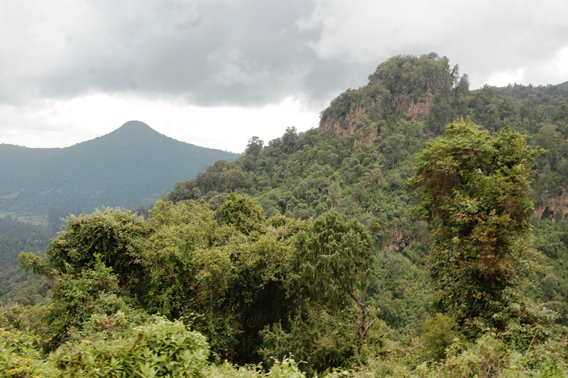
The Harenna forest near the Bale Mountains in Ethiopia. Photo courtesy of: Klaus Eulenberger.
Citation: Susann Bruche & Markus Gusset & Sebastian Lippold & Ross Barnett & Klaus Eulenberger & Jörg Junhold & Carlos A. Driscoll & Michael Hofreiter. A genetically distinct lion (Panthera leo) population from Ethiopia. European Journal of Wildlife Research. ISSN 1612-4642, DOI 10.1007/s10344-012-0668-5. Springer-Verlag Berlin Heidelberg 2012.
See also:
Driscoll, Carlos A., Yamaguchi N, Bar-Gal GK, Roca AL, Luo S, et al. (2009) Mitochondrial Phylogeography Illuminates the Origin of the Extinct Caspian Tiger and Its Relationship to the Amur Tiger. PLoS ONE 4(1): e4125. doi:10.1371/journal.pone.0004125
Dybas, Cheryl Lyn. The Last of the Dark Ones. Africa Geographic. January 2013: p. 53-57.
Related articles
Lion population falls 68 percent in 50 years

(12/04/2012) African lions, one of the most iconic species on the planet, are in rapid decline. According to a new study in Biodiversity Conservation, the African lion (Panthera leo leo) population has dropped from around 100,000 animals just fifty years ago to as few as 32,000 today. The study, which used high resolution satellite imagery to study savannah ecosystems across Africa, also found that lion habitat had plunged by 75 percent.
Wolves, mole rats, and nyala: the struggle to conserve Ethiopia’s highlands

(11/20/2012) There is a place in the world where wolves live almost entirely off mountain rodents, lions dwell in forests, and freshwater rolls downstream to 12 million people, but the place—Ethiopia’s Bale Mountains National Park—remains imperiled by a lack of legal boundaries and encroachment by a growing human population. “Much of the land in Africa above 3,000 meters has been altered or degraded to the point where it isn’t able to perform most of the ecosystem functions that it is designed to do. Bale, although under threat and already impacted to a degree by anthropogenic activities, is still able to perform its most important ecosystem functions, and as such ranks among only a handful of representative alpine ecosystems in Africa.”
King of the jungle: lions discovered in rainforests
(08/13/2012) Calling the African lion (Panthera leo) the ‘king of the jungle’ is usually a misnomer, as the species is almost always found in savannah or dry forests, but recent photos by the Germany-based Nature and Biodiversity Conservation Union (NABU) document lions in Ethiopian rainforests. Taken in the Kafa Biosphere Reserve, the photos show a female lion hiding out in thick montane jungle.
Illegal hunting threatens iconic animals across Africa’s great savannas, especially predators

(10/25/2012) Bushmeat hunting has become a grave concern for species in West and Central Africa, but a new report notes that lesser-known illegal hunting in Africa’s iconic savannas is also decimating some animals. Surprisingly, illegal hunting across eastern and southern Africa is hitting big predators particularly hard, such as cheetah, lion, leopard, and wild dog. Although rarely targets of hunters, these predators are running out of food due to overhunting and, in addition, often becoming victims of snares set out for other species.
Picture of the day: the maned lioness
(10/15/2012) The title is not a typo. Sometimes lioness grow manes as rich and large as males, and there appears to be larger proportion of such ‘maned lionesses’ in Botswana’s Okavango Delta.
Three developing nations move to ban hunting to protect vanishing wildlife

(01/21/2013) Three developing countries have recently toughened hunting regulations believing the changes will better protect vanishing species. Botswana has announced it will ban trophy hunting on public lands beginning in 2014, while Zambia has recently banned any hunting of leopards or lions, both of which are disappearing across Africa. However, the most stringent ban comes from another continent: Costa Rica—often considered one of the “greenest” countries on Earth—has recently passed a law that bans all sport hunting and trapping both inside and outside protected areas. The controversial new law is considered the toughest in the Western Hemisphere.
Cute animal picture of the day: endangered baby Asiatic lions
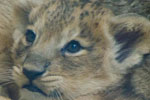
(10/20/2011) In the wild, the Asiatic lion subspecies (Panthera leo persica) survives only in India’s Gir Forest National Park in the north-western state of Gujarat with a population of just over 400 individuals. Around 90 survive in zoos. The subspecies is listed as Endangered by the IUCN Red List. Given its tiny population and the fact that it survives in a single location, the Asiatic lion continues to be threatened by in-breeding, disease, fires, and illegal mining. As well, conflict with villagers continues, and lions have been poached and poisoned in the past.
Decline in top predators and megafauna ‘humankind’s most pervasive influence on nature’
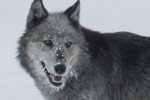
(07/14/2011) Worldwide wolf populations have dropped around 99 percent from historic populations. Lion populations have fallen from 450,000 to 20,000 in 50 years. Three subspecies of tiger went extinct in the 20th Century. Overfishing and finning has cut some shark populations down by 90 percent in just a few decades. Though humpback whales have rebounded since whaling was banned, they are still far from historic numbers. While some humans have mourned such statistics as an aesthetic loss, scientists now say these declines have a far greater impact on humans than just the vanishing of iconic animals. The almost wholesale destruction of top predators—such as sharks, wolves, and big cats—has drastically altered the world’s ecosystems, according to a new review study in Science. Although researchers have long known that the decline of animals at the top of food chain, including big herbivores and omnivores, affects ecosystems through what is known as ‘trophic cascade’, studies over the past few decades are only beginning to reveal the extent to which these animals maintain healthy environments, preserve biodiversity, and improve nature’s productivity.
Conservation groups propose ban on lion parts in US
(03/02/2011) It’s not widely known that the African lion ((Panthera leo) is currently threatened with extinction in the wild, but listed as Vulnerable by the IUCN Red List, the king of animals has declined by over 90% in the past 50 years (from 450,000 lions to between 20,000 and 40,000 today). While conservation work to save the species is on-going in Africa, efforts have now moved to the US as well, where a coalition of conservation groups are filing a petition with the US Department of the Interior to list lions as ‘endangered’ under the Endangered Species Act (ESA). Such a listing would make it illegal to bring lion parts in the country, including those killed by recreational trophy hunters.
A lion’s story, an interview with the filmmakers of The Last Lions
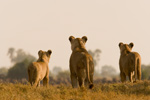
(02/14/2011) The new theatrical film, The Last Lions does not open, as one would expect, with a shot of lions or even an African panorama. Instead the first shot is a view of our planet from space at night. Billions of artificial lights illuminate continent showing just how much humans over the past few thousand years have come to dominate our world. Then comes the lions, but not in person, just in this staggering, and little known, statistic: in the last 50 years we have gone from a population of 450,000 lions to 20,000 today, a 95% decline. While the dramatic story of the The Last Lions follows the perils and tragedies of lion motherhood in one of the world’s last untouched places—the Okavango Delta—this statistic hangs over the film, reminding us that the story we are witnessing is on the verge of extinction.
Asia’s last lions lose conservation funds to tigers
(01/24/2011) The last lions of Asia and the final survivors of the Asiatic lion subspecies (Panthera leo persica) are losing their federal conservation funding to tiger programs, reports the Indian media agency Daily News & Analysis (DNA). While the Asiatic lion once roamed Central Asia, the Middle East, and even Eastern Europe, today the subspecies survives only in India’s Gir Forest National Park in the north-western state of Gujarat.